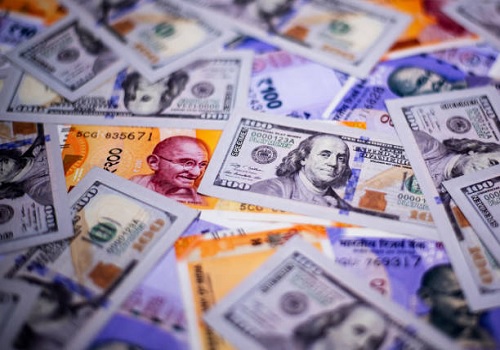Yen breaks above 145/$ level in choppy trading, dollar firm

The yen was volatile on Monday after slipping to its lowest for the year against the dollar, breaching the key 145 level as traders warily looked for clues on possible intervention, while the dollar rose to touch a more than one month high.
The Japanese yen weakened to as low as 145.22 per dollar in early Asian hours, its lowest since Nov. 10 2022 before quickly reversing course. It was last at 144.96 per dollar, flat on the day.
Japan's low yields have made the currency an easy target for short-sellers and funding trades, with the widening gap in the interest rates between Japan and the United States leading to persistent weakness in the yen.
The yen has fallen around 20% since the Federal Reserve began rapidly raising rates to combat soaring inflation in March 2022, while the Bank of Japan remains stuck in an extremely accommodating stance.
Japan intervened in currency markets last September when the dollar rose past 145 yen, which prompted the Ministry of Finance to buy the yen and push the pair back to around 140 yen. The yen is down over 9% against the dollar for the year.
With the yen loitering around that level again, traders expect Japanese officials to start warning of intervention soon.
Saxo Markets strategists said this week's GDP and CPI data in Japan could be key, as well as U.S. data which could continue to push Treasury yields higher.
"Traders are also continuing to watch whether Japanese authorities could intervene but lack of verbal intervention so far suggests potential patience from them."
Treasury yields have been elevated and got another boost on Friday after data showed U.S. producer prices increased slightly in July, more than expected, as the cost of services rebounded at the fastest pace in nearly a year.
That comes after news on Thursday that consumer prices rose moderately in July. The PPI data cast some doubt on whether the Federal Reserve is done with its rate hike cycle.
Markets anticipate nearly 89% chance of the Federal Reserve standing pat on interest rates at its meeting next month, CME FedWatch tool showed, with traders anticipating no more hikes for the rest of the year.
Central bank officials, though, have maintained that it is too soon to make that call.
The inflation data along with recent labour market data point to the Fed leaving rates unchanged at its September meeting, ANZ analysts said, adding that there will be one more set of nonfarm payroll and CPI data for the Fed to consider before the meeting.
They said the resilience of the U.S. consumer will be in the spotlight with the release of July retail sales data, with rising fuel prices and tighter credit conditions expected to bite.
The dollar index, which measures the U.S. currency against six peers, tacked on 0.078% at 102.94, its highest since July 7. The index is up 1% for the month.
The euro was down 0.09% to $1.0934, while sterling was last at $1.2676, down 0.14% on the day
The Australian dollar fell 0.48% to $0.647, while the kiwi slipped 0.38% to $0.596. Both Antipodean currencies have been undermined by disappointing trade and inflation data from China, the biggest buyer of their resource exports.
While sentiment towards China is down, this week's high-frequency China data may only need a small beat to cause a strong upside reaction in China proxies, said Pepperstone's Head of Research Chris Weston.
























